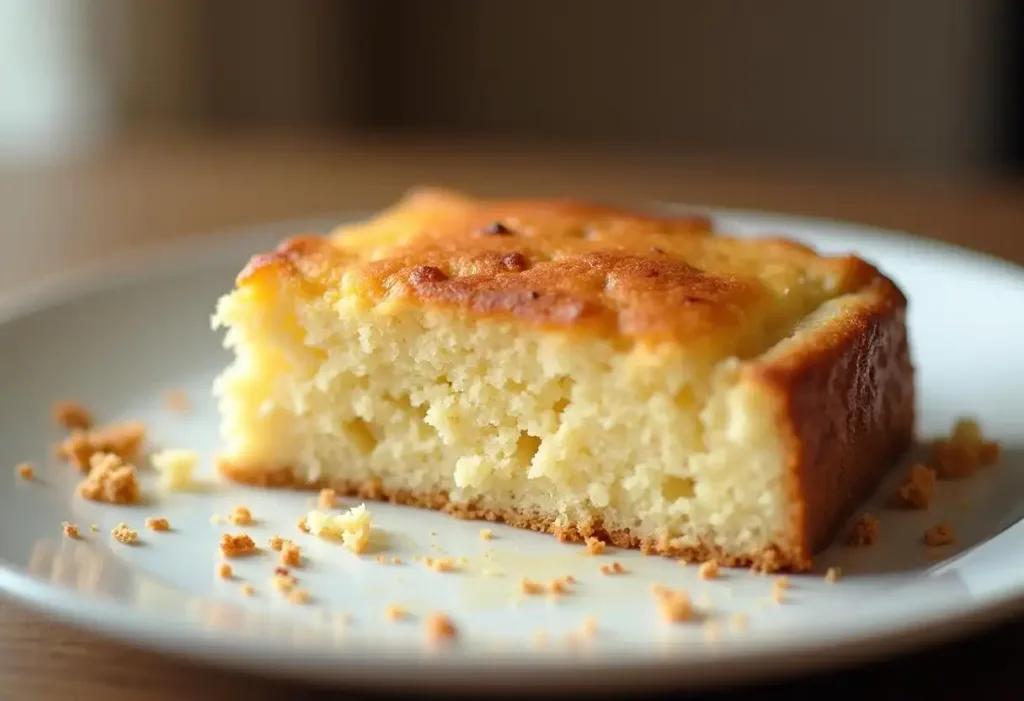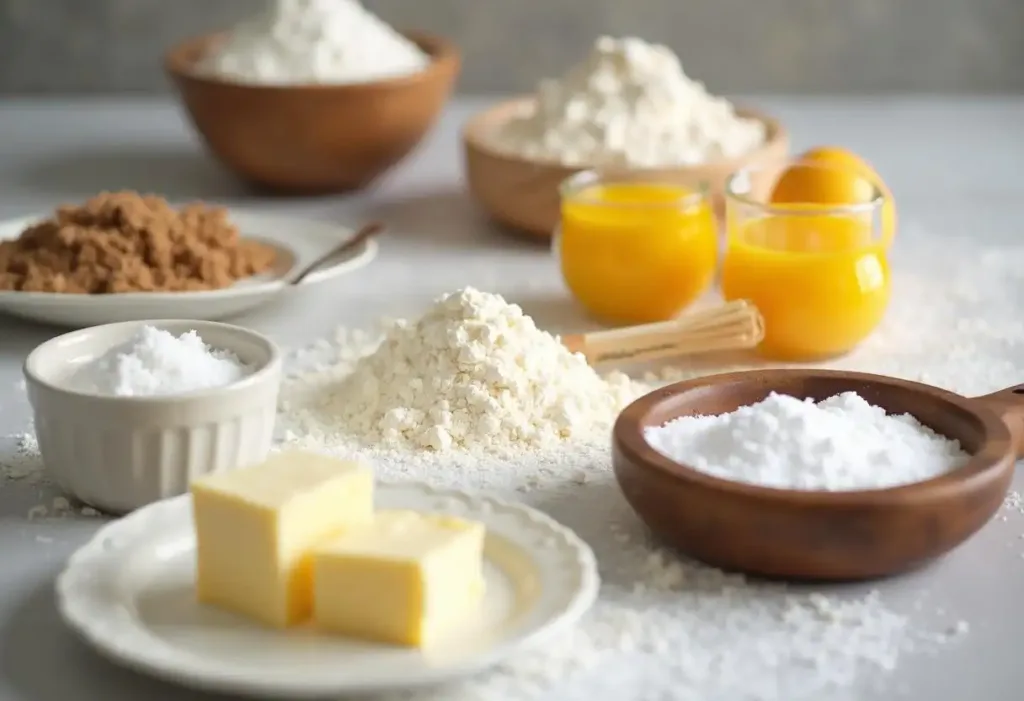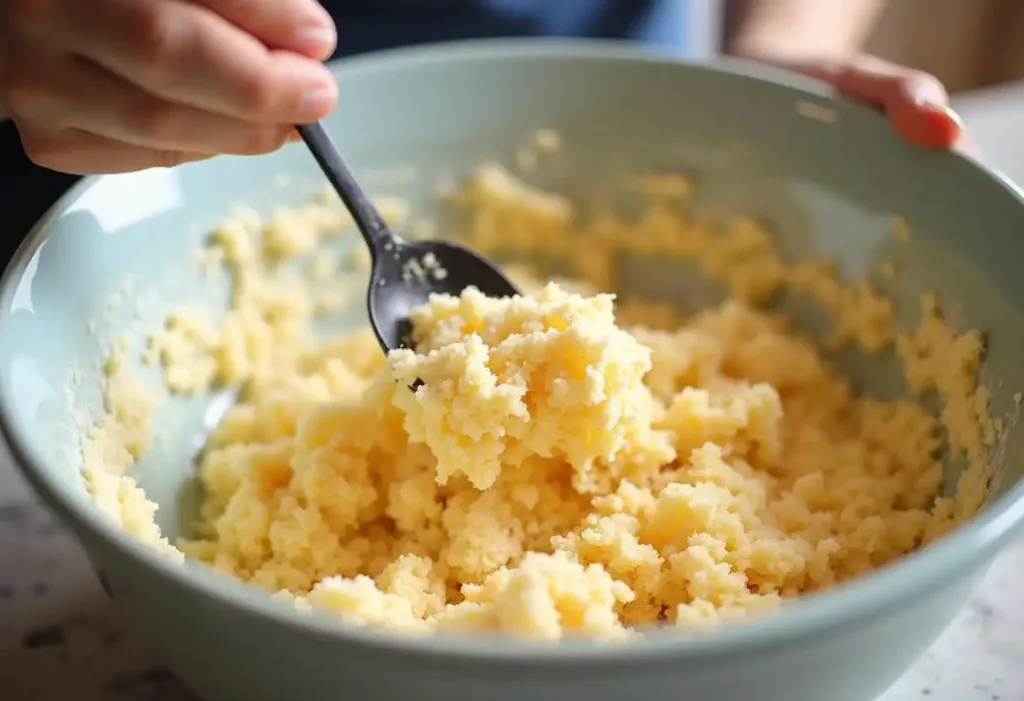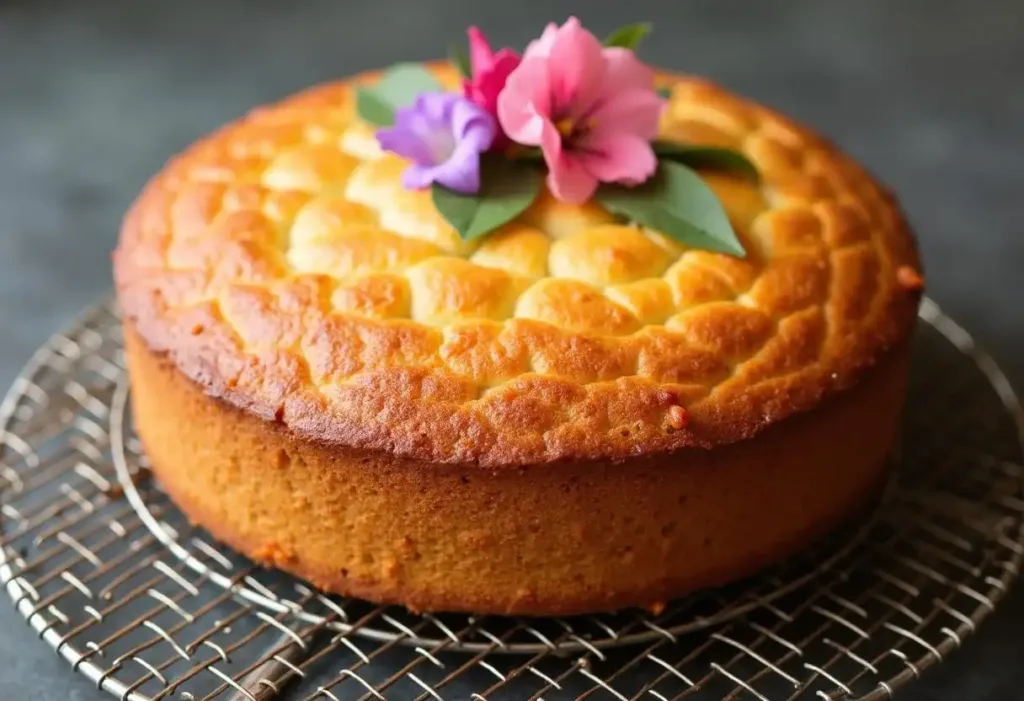Okay, let’s just put it out there – who hasn’t had that moment? You know the one. You pull a beautiful cake from the oven, maybe one you baked for your kid’s birthday or just because your sweet husband deserves a treat. It smells amazing! But then… tragedy strikes. You try to slice it, and poof ! It collapses into a pile of sad, dry crumbs. Mamma mia! It’s enough to make you want to throw your apron down and order pizza. So, if you’ve ever stood there, staring at the wreckage and wondering, what makes a homemade cake crumble? – trust me, you are so not alone. It’s a super common baking bummer, but guess what? We can totally fix this! Stick with me, and let’s figure out how to banish crumbly cakes forever.
We’re going to uncover the usual suspects behind cake crumbles and arm you with the know-how to dodge them next time. Plus, I’ll share some tricks to ensure your cakes come out beautifully textured and sliceable. Get ready to become a cake detective! By the time we’re done, you’ll know exactly how to bake cakes that hold together beautifully. Let’s do this!
The Role of Ingredients: The Building Blocks
Cake Ingredients: The Key Players
Alright, before we diagnose the crumble situation, let’s talk about the team players: the ingredients! Nonna always said, “Respect the ingredients, cara, and they’ll respect your recipe!” Understanding what each one does is the first step to figuring out what makes a homemade cake crumble. Think of it like building with blocks – flour, sugar, fat (like butter or oil), eggs, leavening agents (baking powder/soda), and liquids (milk, water, buttermilk) all have specific jobs. Flour provides structure, fat adds tenderness and moisture, sugar does more than sweeten (it helps with moisture and browning!), eggs bind everything together, leaveners give lift, and liquids hydrate everything.
It’s all about balance! When the ratios get wonky – too much of this, not enough of that – the structure weakens, and that’s when things start to fall apart, literally. Getting those proportions right is everything. So let’s investigate where things might be going wrong.
Common Causes of a Crumbly Cake
The Culprits: Why Your Cake Might Crumble
Okay, let’s put on our detective hats and investigate the crime scene (aka, the crumbly cake). Now that we know our ingredient players, let’s pinpoint the common culprits that sabotage our beautiful bakes. Understanding why it happened is the key to preventing a repeat performance. So, what makes a homemade cake crumble? Let’s look at the usual suspects.
Too Much Flour:
Suspect number one! This happens SO easily, especially if you’re scooping flour with a measuring cup instead of weighing it (guilty as charged in my early baking days!). Too much flour acts like a sponge, soaking up all the liquid and fat. This develops too much gluten and results in a cake that’s dry, tough, and yep, super crumbly. It just doesn’t have enough moisture to hold itself together. Accuracy is key, friends! Weighing your flour is truly the best way to avoid this common pitfall.
Not Enough Fat:
Don’t fear the fat, people! Fat (whether it’s butter, oil, or shortening) is crucial for a tender, moist cake. It coats the flour particles, shortening the gluten strands (hence “shortening”!), which prevents toughness. If you skimp on the fat, trying to make it “healthier” perhaps, you rob the cake of essential moisture and tenderness. The result? A dry, crumbly texture that falls apart easily. Fat equals flavor AND good texture!
Incorrect Sugar Ratio:
Sugar isn’t just for sweetness; it plays a big role in texture too! Sugar attracts moisture, keeping the cake tender and moist. It also interferes with gluten development and protein coagulation, contributing to a softer crumb. If you reduce the sugar too much (again, maybe trying to be healthy?), you risk a drier, denser, and more crumbly cake because the balance of moisture and tenderness is thrown off. Stick to the recipe’s sugar amount – it’s there for a reason!
Over-mixing the Batter:
Are you mixing that batter like you’re mad at it? Stop! Once you add the flour, you want to mix just until combined. The more you mix, the more gluten develops. While gluten is great for chewy bread, it’s the enemy of tender cake! Over-mixing leads to a tough, rubbery, and often crumbly texture. Be gentle! Fold those dry ingredients in with a light hand. We’re aiming for tender, not tough.
Too Little Liquid:
Think of liquids (milk, buttermilk, water, etc.) as the hydrators. They dissolve the sugar, activate the leavening, and hydrate the flour so gluten can form (but not too much!). If there isn’t enough liquid, the flour can’t hydrate properly, the sugar won’t dissolve well, and the whole thing ends up dry and crumbly. Make sure you’re measuring liquids accurately and that the batter looks properly moistened – not stiff and dry.
Incorrect Leavening:
Those little helpers, baking powder and baking soda, create the gas bubbles that make a cake light and airy. But using too much, too little, or old , inactive leavening can mess things up. Too much can cause the cake to rise rapidly and then collapse, leading to a coarse, crumbly texture. Too little (or expired stuff) means not enough lift, resulting in a dense cake that might also crumble easily because the structure isn’t right. Check those expiration dates, people!
Troubleshooting Crumbly Cakes: Solutions & Fixes
Rescue Your Cake: Practical Solutions
Okay, so we’ve identified the culprits behind what makes a homemade cake crumble. Now for the good part: the fixes! While you can’t un-crumble an already baked cake (though cake pops are always an option!), you can definitely prevent it next time. Let’s talk practical solutions to ensure future baking triumphs!
Adjusting Flour:
The #1 fix here is accurate measuring! Invest in a kitchen scale – seriously, it’s a game-changer for baking consistency. Weighing your flour eliminates the risk of accidentally packing too much into a measuring cup. If you must use cups, use the “spoon and level” method: gently spoon flour into the cup until it’s overflowing, then level it off with a straight edge. Don’t scoop directly from the bag! Getting the flour amount right is crucial.
Adding More Fat:
If your cakes are consistently dry and crumbly, double-check that you’re using the amount of fat called for in the recipe. Don’t be tempted to reduce it significantly. Ensure your butter is properly softened so it incorporates well. Some recipes benefit from using oil (or a mix of butter and oil) for extra moisture. Even adding an extra egg yolk (which contains fat) can sometimes help add richness and binding.
Balancing Sugar:
Resist the urge to drastically cut the sugar! It’s there for texture and moisture, not just sweetness. Follow the recipe amount closely. Also, make sure you’re using the right type of sugar – granulated, caster, brown sugar all behave slightly differently. Caster sugar (superfine) dissolves easily and is great for cakes. Brown sugar adds extra moisture due to its molasses content.
Mixing Techniques:
Practice gentle mixing! Once the dry ingredients are added, mix on low speed (or fold by hand with a spatula) just until no streaks of flour remain. Scrape the bowl down to make sure everything is incorporated, but don’t keep mixing unnecessarily. Think “combine,” not “beat.” Proper mixing is one of the key techniques for moist cake that also prevents crumbling.
The Right Liquid:
Ensure you’re adding the correct amount and type of liquid specified in the recipe. Different liquids interact differently – buttermilk adds acidity that reacts with baking soda, while milk adds richness. If your batter seems exceptionally thick and dry compared to usual, double-check your liquid measurement. Sometimes a tiny bit more liquid might be needed depending on humidity, but be cautious not to make it too wet.
Correct Leavening:
Check those dates! Toss out expired baking powder or soda – they lose their power over time. If you’re unsure, test your baking powder by adding 1/2 teaspoon to 1/4 cup of hot water; it should bubble vigorously. Test baking soda by adding 1/4 teaspoon to a teaspoon of vinegar; again, look for lots of bubbles. Use fresh, active leavening for the best structure and lift, which helps prevent crumbling. Getting the leavening right is crucial to make cake moist and fluffy, not dense and crumbly.
Preventing Crumbly Cakes: Tips for the Future
Baking Smart: Avoiding Crumbly Cakes
Okay, knowledge is power! Now that we know the potential pitfalls and fixes, how do we set ourselves up for success from the get-go? Baking smart means being prepared and mindful. It doesn’t mean being perfect (lord knows I burn toast sometimes!), but a little care goes a long way. Remember, baking is an act of love, not a stressful exam! Here are my top tips for preventing crumbly cakes before they even happen.
My biggest tip? Measure accurately! I sound like a broken record, but weighing dry ingredients (especially flour) is the single best thing you can do for consistent results. Follow trusted recipes closely – don’t just eyeball amounts or make major substitutions without understanding the impact. Make sure your oven temperature is correct (an oven thermometer is cheap and super helpful!). And don’t rush! Read the recipe through first, get your ingredients ready (room temperature eggs and butter!), and enjoy the process. Avoiding common baking mistakes often comes down to these simple habits. You’ve got this!
Frequently Asked Questions (FAQ)
Alright, let’s tackle those quick questions that might still be floating around. Happy to help!
Q: What causes a cake to be crumbly?
A: Usually, it’s an imbalance! The most common reasons **what makes a homemade cake crumble** are too much flour, not enough fat (like butter or oil), not enough liquid, or over-mixing the batter after adding the flour. Any of these can make the cake dry and unable to hold itself together.
Q: What ingredient makes cake crumbly?
A: It’s rarely just *one* ingredient’s fault! But having too much flour or too little fat are probably the biggest single culprits. Flour absorbs moisture, and fat adds moisture and tenderness. Get those two out of whack, and you’re heading towards Crumble City!
Q: How do you fix a cake that crumbles?
A: Sadly, you can’t really ‘un-crumble’ a baked cake. But don’t toss it! Crumbled cake is perfect for making delicious cake pops (mix with frosting!), layering in trifles, or using as a topping for ice cream or yogurt. Learn from it for next time! Nigella Lawson has some thoughts on salvaging a **Crumbly Chocolate Fudge Cake** too.
Q: What makes a cake break apart?
A: Besides being generally crumbly (due to the reasons above), a cake might break apart if its structure is weak. This could be from incorrect leavening (not enough lift), over-mixing (making it tough AND crumbly), or sometimes even trying to remove it from the pan too soon before it’s cooled and firmed up a bit. Patience and proper technique are key!
Conclusion
So there we have it, amici! No more crying over crumbled cake! Now you’re armed with the knowledge of what makes a homemade cake crumble and, more importantly, how to prevent it. It really just boils down to understanding your ingredients, measuring carefully, mixing gently, and trusting the process. With a little practice and attention to detail, you’ll be baking up beautifully textured cakes that slice like a dream – cakes my kids would happily devour (crumb-free!).
Don’t let a past baking blunder discourage you. Put these tips into practice, have fun in the kitchen, and enjoy the sweet success! Remember, baking is love made edible. Need more baking wisdom? Check out this article on common baking mistakes – many principles apply to cakes too! Happy Baking! Buon appetito!





